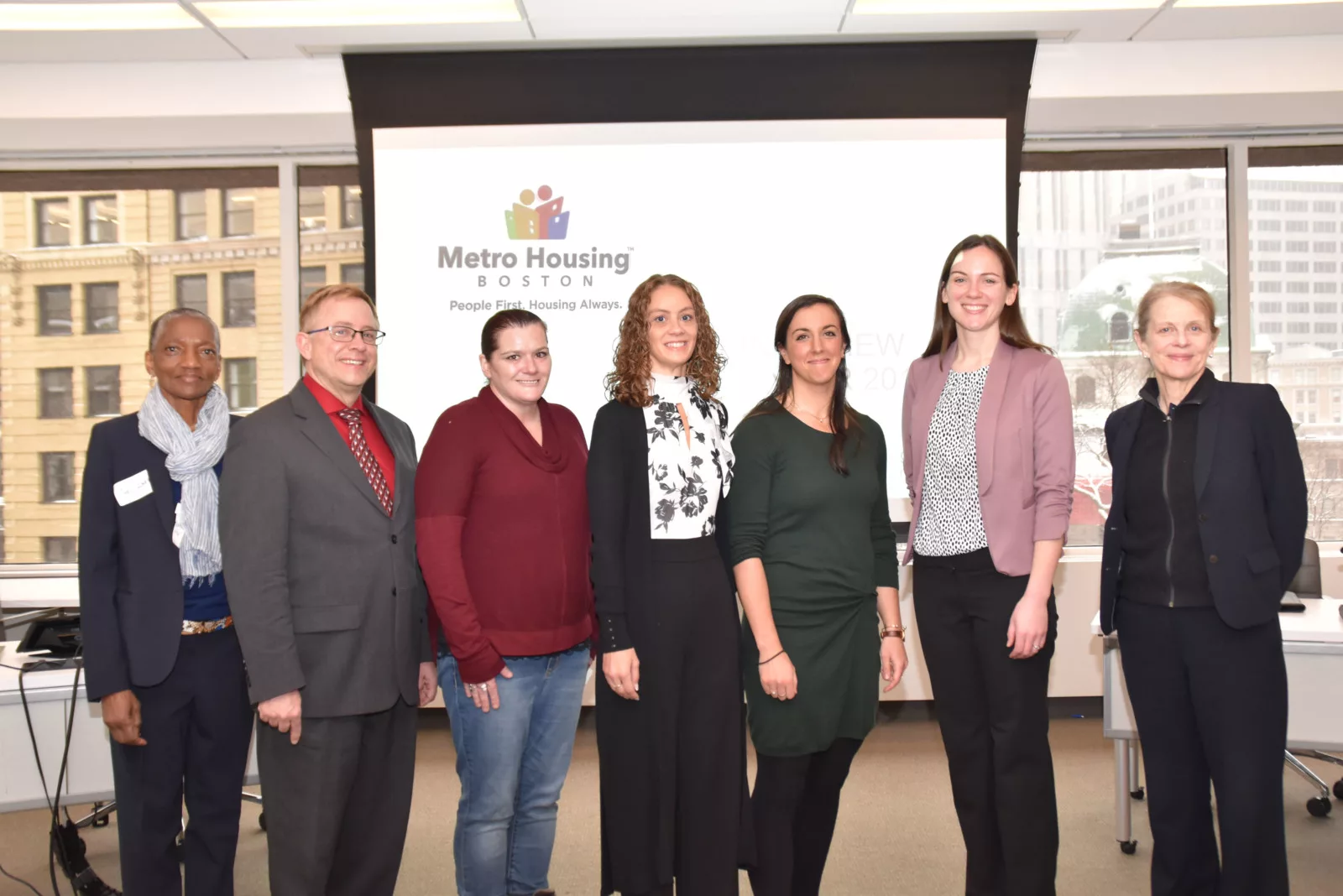Source: Dorchester Reporter

by By Katie Trojano, Reporter Staff
December 4, 2019
Dorchester, the city’s largest neighborhood in terms of geography and population, also has more families in need of emergency housing assistance than any other community in Boston.

In releasing its annual findings of housing stability on Tuesday morning, Metro Housing Boston noted a key finding: A total of 1,710 households citywide received Residential Assistance for Families in Transition (RAFT) funds in FY 2019. Of those households, 599 were in Dorchester, receiving a total of $1.5 million, the most of any neighborhood.
RAFT is a homelessness prevention program for families with very low incomes experiencing a housing crisis.
The total value of assistance to all Metro Housing communities was put at $4.4 million, the average dollar amount of assistance per household at $2,599, and net savings to emergency assistance shelter systems at $33 million.
Molly Butman, assistant director at Metro Housing, said that the RAFT program assists people who are experiencing three common types of housing crises: those facing the threat of eviction; people or families who are “doubled-up,” living with friends or relatives in an insufficient amount of space; and those who have had utilities turned off.
“RAFT is the largest homelessness prevention program in the city, and originally it was developed as a tool to keep people out of the emergency assistance shelter system,” said Butman, who added: “Based on FY19, we looked at household composition and income and found that about half of the families that we assisted could potentially have entered the shelter system if we hadn’t intervened with RAFT.”
The analysis also examined consecutive repetition by families and individuals needing RAFT assistance. Only six percent of participants from FY19 received RAFT in FY18. Data also found that 22 percent of FY19 participants had used RAFT at least once in the past. Butman said that some regulations exist that prohibit the consecutive use for some populations.
To qualify for RAFT assistance, a family of any household composition must have a household income that’s below 50 percent of the area median income. In the Boston region during fiscal year 2019, this was $53,350 for a family of three.
Sheila Dillon, Boston’s Housing chief, offered some context to where Boston is in terms of eviction executions in noting that the majority of citywide evictions happen in subsidized housing, because tenants in low-income housing generally make less money. Dillon also said that in the private market, eviction rates have been on the decline.
“The work isn’t done, but our eviction rate compared to other cities is low. What we need to do is build more housing. Part of our problem is that we just don’t have enough affordable housing across income bands,” said Dillon.
“The reason that our housing costs are high,” she said, “is because we have a growing population, more jobs, and we’re not creating enough housing. We have a housing plan that requires us to build 69,000 new units— 15,000 of those will be deed-restricted. When we add that to our existing housing stock we should have 70,000 affordable units in the city.”
At the session, Thea James, MD, vice-president of Boston Medical Center, talked about the impact of housing instability and health care. “As a [doctor] you see human nature, the human condition, and all of what constitutes life every single day. If you bother to dig deeper and go beyond treating disease to understand what’s driving it, you will understand the root cause,” said James.
“We’re screening for determinants of health in all of our ambulatory care clinic now,” she said, “and housing is one of the top things that people screen positive for in terms of where they have gaps and what they need help with.”
James said that rent-burdened patients often are forced to choose between paying their rent and utilities, or paying a copay for a medical appointment. “It’s an easy decision for the patients,” she noted. “Doctors are chasing unstable disease in patients that are chasing unstable life. They don’t align, and it’s a perpetual cycle of instability.”
The last panelist to speak was Eileen Murphy, a RAFT program participant. “I’ve been a recipient of the RAFT program a couple of times over the last ten years,” she said. “The first time, I was homeless and in a shelter with my 14-month-old daughter. It helped stabilize me, it put me back on my feet. If I didn’t have it, I’d be homeless, or even worse. I’d probably end up dead. I’m a recovering addict and the more stress you have the more likely you are to relapse, and that’s not an option for me.”